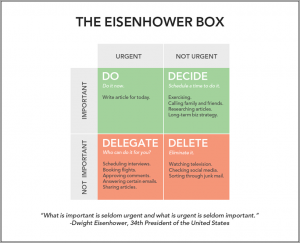Steer clear of common decision-making mistakes like inconsistent data monitoring, wrong metrics and a lack of agility.

My previous article on building a data-driven organization focused on using data to guide marketing strategies from the start. We tackled common challenges like relying on anecdotes, unclear objectives and data silos, laying the groundwork for more focused and effective marketing strategies.
This article will shift our focus to the execution phase of marketing campaigns and initiatives, where your strategy comes to life. Maintaining a data-driven approach is crucial to avoid decisions based on anecdotal evidence or gut feelings. Accurate data and real-time insights let you adapt and refine your efforts for the best outcomes.
What stands in the way of using data effectively during a campaign?
Even with careful planning and a commitment to staying data-driven, a campaign can still go wrong. Here are some common challenges that sidetrack marketing teams, even when they aim to rely on data.
Inconsistency in data monitoring and analysis
The term “garbage in, garbage out” often applies in the world of data. When the information you are using is inconsistent, incomplete or otherwise lacking, it will be next to impossible to make good decisions based on data.
Inconsistent data monitoring leads to missed opportunities for optimizing a marketing campaign. This often occurs when teams check campaign performance sporadically, leading to delayed responses to emerging trends or issues. For example, a campaign might be underperforming in a specific demographic. Without regular monitoring, this insight comes too late to make effective adjustments.
Additionally, incomplete data may only provide part of the picture. However, because it is the only data available for a marketing team to consult, it may unduly influence decisions made at critical junctures.
What should marketing teams do to avoid this?
- Start by establishing a system for real-time data monitoring and regular analysis. Use dashboards and analytics tools to get up-to-the-minute performance data.
- Don’t allow yourself or your teams to get distracted by more pressing items and lose track of the need to review regularly. Set up alerts for key metrics to ensure you are immediately informed of significant changes.
- Schedule regular review meetings to discuss performance and make prompt data-driven decisions.
Monitoring data consistently allows for timely interventions to ensure your campaign stays on track and achieves its goals.
Being directed by the wrong metrics
Vanity metrics are easy to use in a presentation or dashboard but rarely tell the right story. Metrics such as likes, shares and followers often look impressive. However, they are difficult to tie to real success and business KPIs. Focusing on these metrics creates a false sense of success rather than focusing a team on business drivers like conversion rates, customer acquisition cost (CAC) or customer lifetime value (CLV).
A commonly used example is a social media campaign that generates a lot of followers but hardly any sales. The vanity metric of followers can be pointed to as a measure of success, but if followers don’t translate to sales, is the campaign truly successful?
Being data-driven means focusing on the right data and the most useful metrics. This requires carefully choosing the measurements that guide success and decision-making. You’ve certainly experienced this at some point in your career.
What should marketing teams do to avoid this?
- Start by prioritizing metrics that align with your business objectives and provide actionable insights.
- Focus on performance indicators that measure progress toward your campaign goals, such as click-through rates, conversion rates or return on investment (ROI).
- Finally, don’t just set it and forget it. Regularly reassess your chosen metrics to ensure they remain relevant to your evolving strategy.
Focusing on meaningful metrics rather than the easiest or most impressive ones helps you better understand your campaign’s impact and make smarter decisions.
Delaying key decisions because of a lack of agility
Even with good data and agreement on success metrics, challenges can still emerge with data-driven decisions. For example, being slow to act during a live campaign or marketing effort can lead to a lack of optimization and the possibility of overlooking opportunities entirely.
If campaign messaging isn’t connecting and driving sales, quickly making decisions based on good data can turn things around and lead the campaign to success.
Decision-making delays may cost you your customers’ attention and your campaign’s sales or other objectives.
What should marketing teams do to avoid this?
- To start, it is important to set a foundation by creating agile processes that allow teams to make quick, data-driven decisions.
- With this in place, implement a test-and-learn approach where small-scale experiments are conducted rapidly to validate hypotheses.
- At a high level, work with leadership to encourage a culture of agility where team members can make adjustments based on real-time data insights.
Encouraging quick decision making lets you constantly improve your campaigns and adapt to changing conditions.
Executing data-driven marketing: Overcoming key challenges for success
A data-driven approach to your marketing campaigns brings valuable rewards that only real-time evaluations can offer. Use consistent, high-quality data and focus on meaningful metrics to ensure your efforts will stay optimized. If results dip, make adjustments based on solid, actionable data instead of relying on gut feelings.
In my next article, we will explore the role of data-driven decision making in the post-campaign phase and how to conduct data analysis, avoid bias in data interpretation and incorporate feedback loops to inform future strategies.
The post How to avoid pitfalls of data-driven marketing execution appeared first on MarTech.
(5)
Report Post





